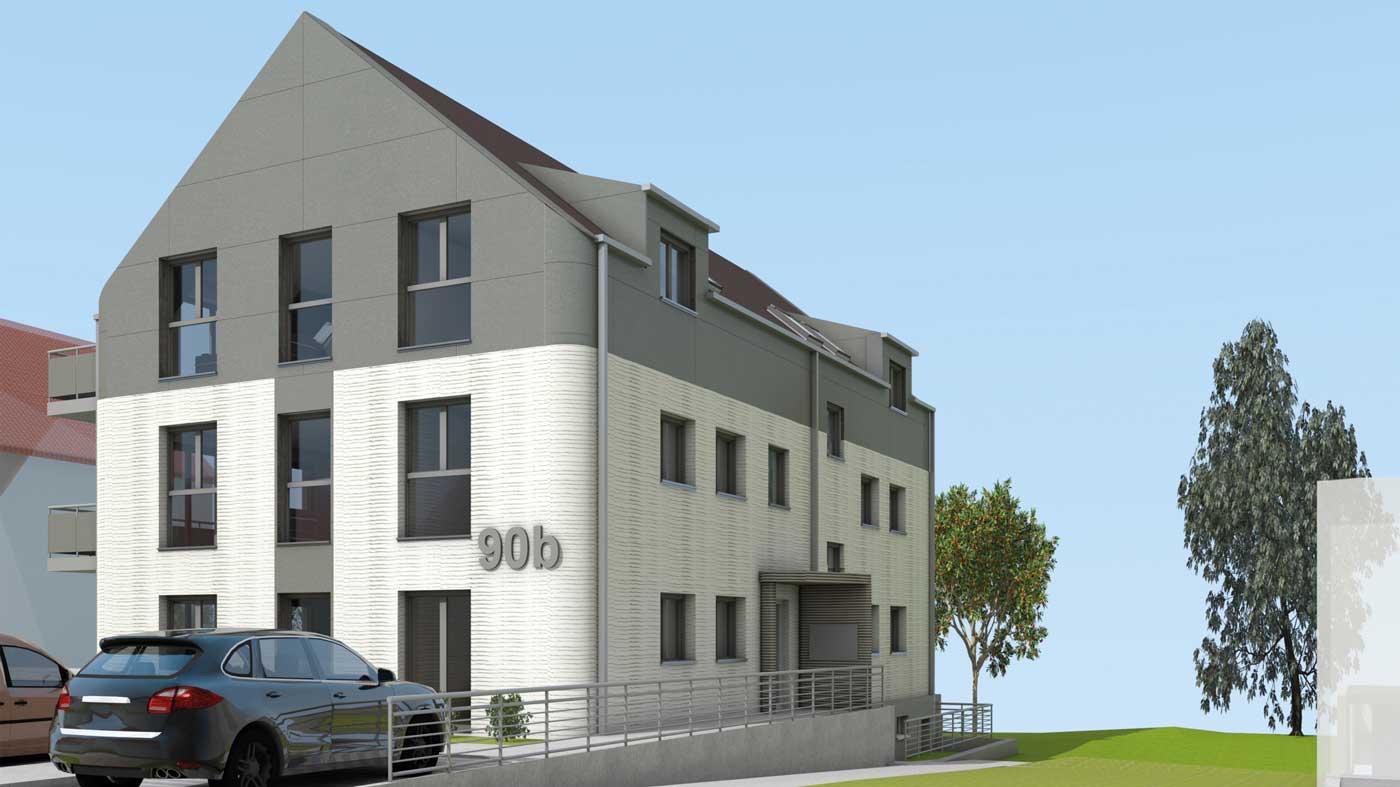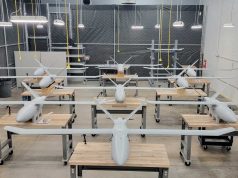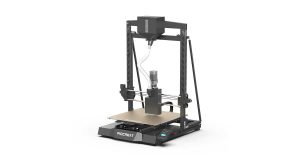In the North Rhine-Westphalian city of Lünen, Germany’s first publicly subsidized multi-family house is being built using the 3D printing process. For the first time, the innovative construction method is being combined with the conditions of public housing subsidies.
The Ministry for Home Affairs, Municipal Affairs, Construction and Digitalization of the State of North Rhine-Westphalia is funding the construction project of the Lünen housing association on the one hand with 400,000 euros from the state’s own “Innovation in the Construction Industry” subsidy. On the other hand, the ministry is providing around 1.3 million euros from the public housing promotion program. In accordance with the housing promotion regulations, the price per square meter for rent will be a maximum of 6.00 euros per square meter. The total cost of the construction project is around 1.9 million euros. The building is scheduled to be ready for occupancy in October 2024.
“With the first publicly subsidized apartment building, we are bringing affordable housing and innovative construction under one roof in North Rhine-Westphalia. With our 3D’s for the future of building – digital, dynamic, ready to print – we are making more living space possible for people on a budget. All innovative things come in threes: first the single-family home in Beckum, then the clubhouse in Nordkirchen, and now the publicly subsidized apartment building in Lünen – all three building types from the 3D printer were the first to be created in North Rhine-Westphalia. This means that North Rhine-Westphalia is and remains a pioneer in Germany. With the pioneering project in Lünen, we are showing that public housing can be built quickly, modernly and sustainably despite these challenging times. North Rhine-Westphalia is setting standards in construction and continues to push for more affordable housing,” says Ina Scharrenbach, Minister for Home, Municipal Affairs, Construction and Digitalization of the State of North Rhine-Westphalia.
The implementation is carried out by PERI 3D Construction, it this year already the third construction project in Germany alone.
“We are pleased to be able to demonstrate once again how quickly, efficiently and resource-efficiently the 3D printer can create living space and which potentials also open up in the multi-family house segment. We are convinced that the technology is already ready for widespread use on modern construction sites,” says Dr. Fabian Meyer-Brötz, Managing Director of PERI 3D Construction GmbH. For the company, the funding is an important signal to the construction industry. More and faster construction must take place, otherwise the industry will not be able to meet the demand for living space. In order to be able to manage this in view of the existing challenges, it needs courage for real innovation – and already the openness to engage with new construction methods such as 3D printing.
On site in Lünen, a small team led by project manager Lena Zimmer oversees the printing process: “The COBOD BOD2 3D printer needs a total of just under 100 printing hours for the walls to be printed. We are also using our new, specially developed sensor system on this project, which provides valuable data and makes our work easier.”
The company continues to optimize the 3D printing solution with each project – both the planning and execution processes and the technology involved: The new sensor system is in use for the first time in Lünen and provides valuable data on the condition of the print material in real time. This makes it easier for the team on site to maintain the quality of the individual layers at a consistently high level, regardless of the weather and other factors. While the exterior walls present themselves in the classic 3D printed look, the layers of the interior walls are also automatically smoothed during printing. This makes plastering much easier afterwards.
The first floor and the second floor are built using the 3D concrete printing process. The top floor will be built using a timber hybrid construction method. The foundation, the base and the filigree slabs will be built using conventional construction methods. The facade structure on the first floor and upper floor retains the original printed concrete structure. The top floor will be clad using façade panels.
Jan Hische, board member and managing director of Wohnungsbaugesellschaft Lünen: “For us as a housing cooperative, the focus is particularly on affordable housing. In order to create this, we need new ways! That is why it is particularly important to us to combine the innovative idea of 3D concrete printing with the housing subsidy of the state of North Rhine-Westphalia. We are proud to be able to accompany the further development of this new construction method together with our project partners.”
The three-story building is being constructed on a 651-square-meter plot in the Lünen-Geist district near the city center. The new building will have a total of six residential units between 61 and 81 square meters.
Architect Lothar Steinhoff: “The construction of the first six publicly subsidized apartments for WBG Lünen and the work with the 3D concrete printer is a strong signal for the construction industry. Together, all project partners involved are once again making an important contribution to further developing future technologies in the construction industry. With our experience from the last projects, we are developing a control card catalog that will also be applied to the next planned buildings. Processes in execution planning are to be standardized in this way.”
The 3D-printed concrete used by Heidelberg Materials is a high-tech building material that is 100 percent recyclable as a mineral building material. In addition, this 3D-printed concrete contains a binder with around 55 percent CO2 reduction compared to a pure Portland cement. Due to its pumpability and extrusion properties, the building material is suitable for 3D printing. At the same time, the strength development of the material is adjusted to produce a very uniform printed image. 3D printed concrete is used to create components with high dimensional stability. In addition, targeted design planning results in a high potential for efficient material use.
Subscribe to our Newsletter
3DPResso is a weekly newsletter that links to the most exciting global stories from the 3D printing and additive manufacturing industry.























